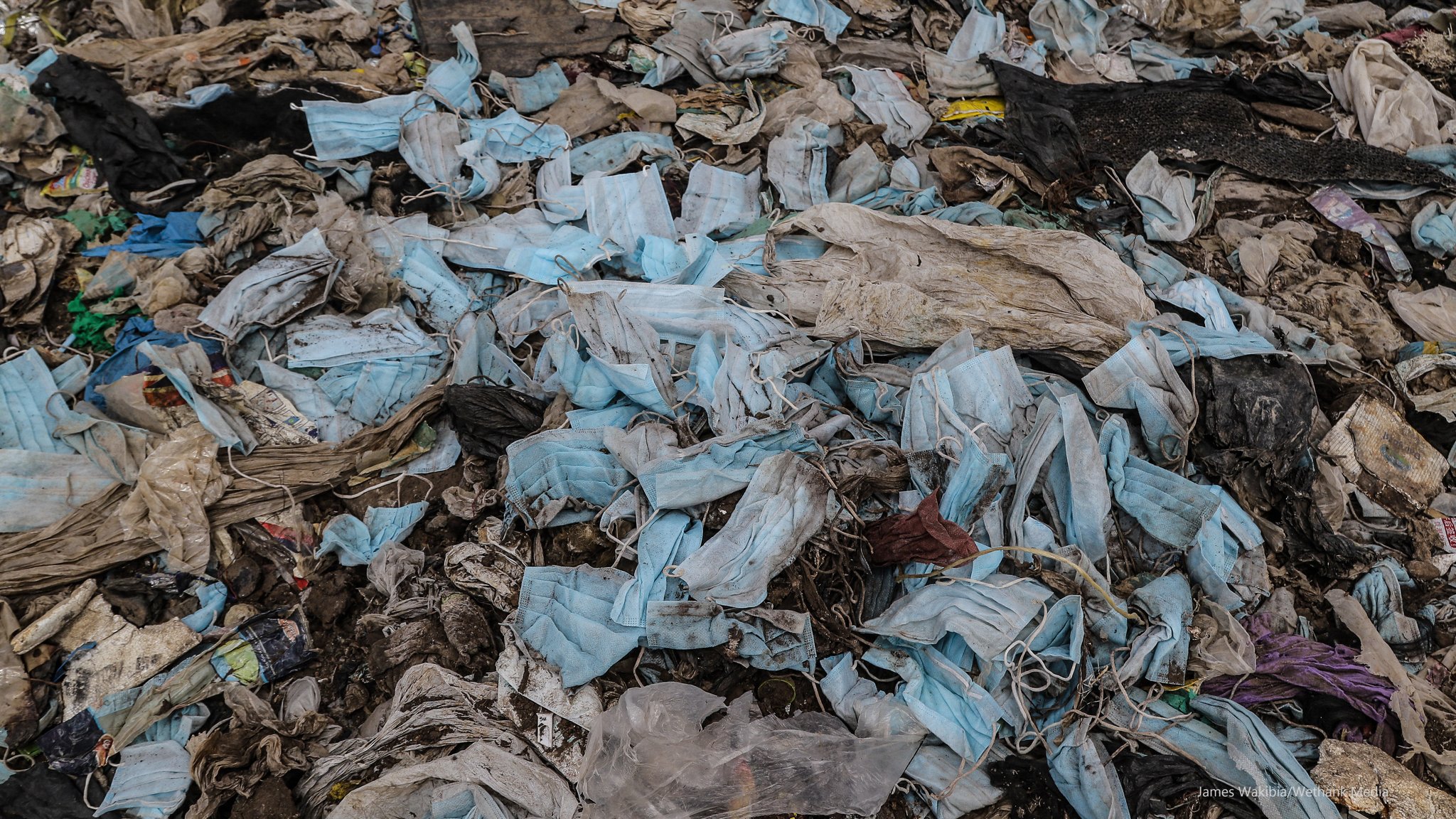Visualizing
the Virus
Coronavirus and Single-Use Plastics
On Interwoven Ubiquities
With the pandemic, the complex ubiquity of plastic waste has resurfaced as a technical, political, moral, and bio-ecological problem. While individual users have tended to be held responsible for ‘coronalitter’, this new spectre of plastic waste goes beyond the praxis of the citizen, bringing into visibility a political economy.
From early 2020, the plastics industry sought to reframe, revalorise, and promote ‘single-use’ plastics (SUP) within the multimodal efforts to respond to the pandemic. This was in the backdrop of environmental critiques and public opinion on plastic pollution leading to long overdue public policies being discussed across the world (and implemented, albeit unevenly) to close the tap on SUP and to phase out plastics in commercial retail packaging. The pandemic not only offered the plastics industry commercial and marketing opportunities, but also political leverage.
Medical equipment, especially personal protective equipment (PPE), swiftly emerged as an urgent necessity for shielding/containing viral transmission, especially for frontline workers and vulnerable members of the public. In a context of such high demand, the dearth of this vital equipment meant that plastics were considered the only material that could respond effectively to the massive scale of the crisis and afford quick and differentiated equipment production. This was thanks to their cheap and abundant supply (from petrochemicals) and amenability to product specification – the very capacity for ‘infinite transmutation’ that had made plastics the preferred material for design and industrial batch-production in the decades following the Second World War. The industry (opportunistically) advocated single-use and disposability for these products, recommendations that were not restricted to the medical setting alone.
In many cases, governments responded favourably. Many American states delayed or took U-turns upon policies that sought to reduce SUP, citing the pandemic. A Government Reform Subcommittee on the Environment urged then-President Trump ‘to use all his power to increase production and distribution of masks, face shields, surgical gowns, isolation gowns, goggles, disposable caps, disposable shoe covers, and disposable gloves’ for their easy access to frontline workers and the general public. Even the UK and the EU postponed parliamentary discussions on urgent plastic regulation bills for months.
How were SUP revisualised and disposability revalorised in public perception?
Mike Michael and I published a think-piece in April 2020, where we demonstrate – with evidence from the media in the US and in UK – how plastic industry lobbyists mobilised fear of cross-surface contagion. In mobilising such ‘affects’, public doubt was sown regarding the re-use of material equipment. In an atmosphere where people were urged to reduce inter-personal contact as part of a personal responsibility to ‘save lives’, acceptability and demand for SUPs across markets were discursively regenerated. For example, in the area of retail commerce, ‘single-use plastic bags provide a sanitary and convenient way to carry our groceries home while protecting supermarket employees and customers from whatever is lurking on reusable bags’, read an official statement from the President and CEO, (US) Plastics Industry Association (PLASTICS). The Association promoted plastic products as an ‘essential… first line of defence’ against the coronavirus. Plastics – material and industry – were framed as the protective shield between zones of safety and contagion, certainty and doubt, health and illness, life and death. Cutting through these claims runs a false equivalence levelled between medical settings – where single-use devices are routinely deployed, and mundane public spheres of activity, like shopping.
Scientific evidence was misrepresented to promote disposability. For example, data on longer surface persistence of SARS-COV-2 on plastic (compared to other materials like metals, wood, etc.) was highlighted to justify why plastic objects needed to be disposed after single-use. Disposability was framed as ‘literally… the difference between life and death’. ‘We live longer, healthier and better because of single-use plastics’, read the same statement, presenting SUP as the urgent ‘solution’ the world needed. Many scientists, and environmental advocates contested these claims. Over 115 medical experts from across 18 countries signed a statement reassuring the public that plastic objects could indeed be disinfected and re-used safely. But re-use is not commercially attractive as single-use.
Disposability, Hawkins and others demonstrate, is part of capitalist calculation of value, as ‘made to be wasted’ serves to frame the temporal cycle of production. Throwing away makes way for new products, Liboiron argues, turning commercial profitability into a sustainable proposition. It keeps production lines ongoing, in a predictable, financially viable and scalable fashion, leading to business expansion. Clearly, with single-use, the temporal rhythm of such commerce is shortened and intensified. With production calculated to meet sustained demand, disposability of plastic products during the pandemic must therefore be understood to constitute efforts to drive quick demand and develop a mass-scale market across sectors around the world: a ubiquity of ‘protection’ against a ubiquitous pandemic virus.
Many commentators argue that irrespective of whether SUP products actually protect human lives, they have certainly offered the plastics industry a fresh lease of life, while at the same time the pandemic brought many oil-intensive industries to a grinding halt globally, with fall in demand and a storage crisis causing crude oil prices to drop dramatically. The renewed, reintensified demand for plastics offered a commercial opportunity for the petrochemical industry to divert and encash feedstock.
Two years into the pandemic, images of sea-horses dragging face-masks in their tails, or turtles choking in discarded PPE come as a shock to many: how did it come to this? ‘Coronalitter’ constitutes a fresh geological layer of discards, inextricably entangled with all the lives that live, or ever will. New forms of plastic complicate lived experiences in ‘our’ multiple, multispecies worlds: worlds in which the material remnants of colonialisms and racial capitalisms persist to make uneven claims on bodies and sites. However, before discussing individual responsibility, we hope that this critique will inform the reader as to how plastic disposability has been woven – structurally – into the temporal rhythms of pandemic capitalism. As ‘pandemic plastics’ linger on, their visibility leaves long-persisting questions of responsibility to ponder, and act upon.

